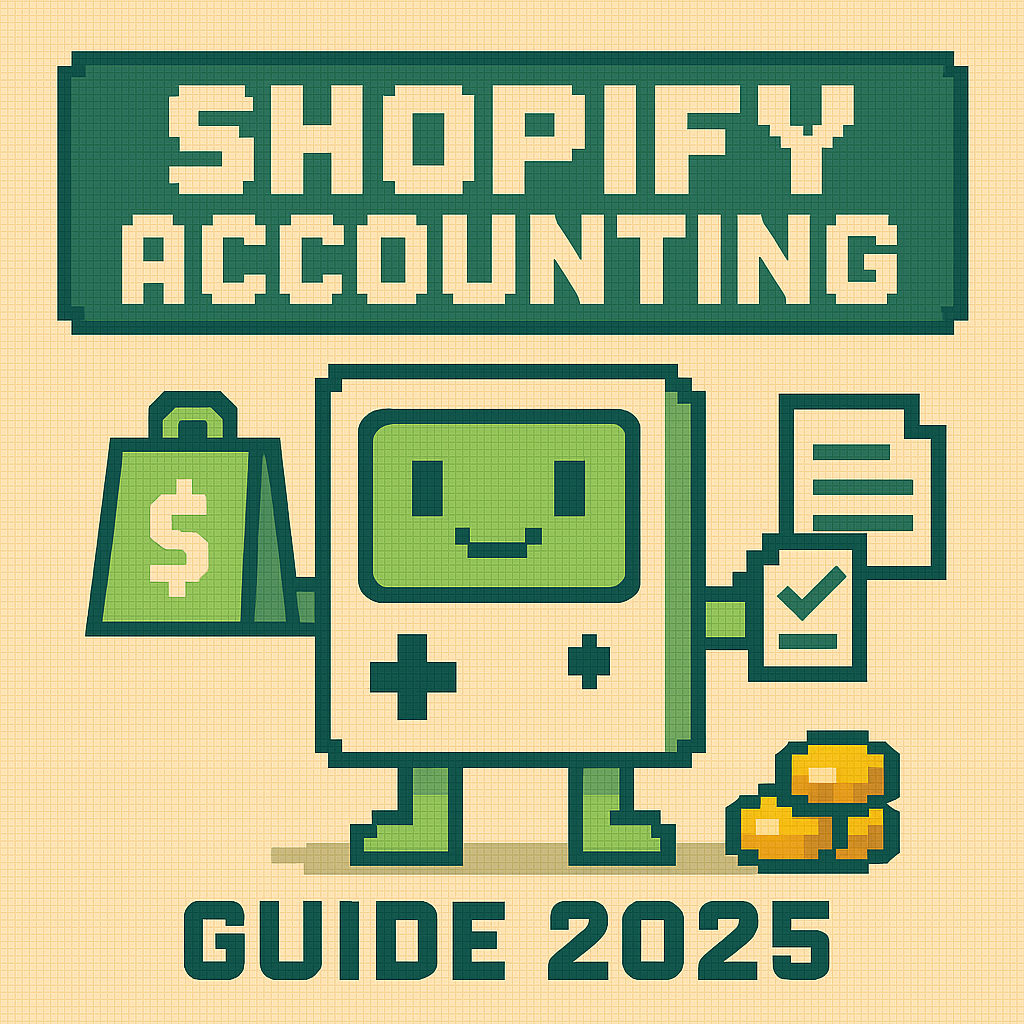Real-Time Bookkeeping: Modern Financial Management (2025)

Monthly financial closes are outdated and keep you 30 days behind your actual business performance. Real-time bookkeeping provides immediate access to critical financial data, enabling faster decision-making, better cash flow management, and proactive problem-solving. This guide shows you how to implement automated, real-time financial tracking using modern tools and processes.
💰 Personal Experience
I used to spend the first week of every month doing "month-end close." You know the drill—reconciling accounts, categorizing expenses, trying to figure out what happened 3 weeks ago when you have zero memory of why you spent $247 at Home Depot.
✅ Key Realization
Then I realized I was optimizing for the wrong thing: I was making my books perfect for the accountant while staying completely clueless about my actual business performance.
💡 Here's what changed my mind: I was about to place a massive inventory order when I checked my real-time cash flow and realized we'd be short on cash in 6 weeks. The monthly close from 3 weeks prior showed everything was fine. Real-time data saved me from a major mistake.
⏰ Timing: That's when I ditched monthly closes and went all-in on real-time bookkeeping.
The Problem with Monthly Closes
✅ The Reality
Monthly closes are a relic from when everything was done with paper ledgers and adding machines. Made perfect sense then. Makes zero sense now.
You're Always 30 Days Behind
By the time you "close" January, it's February 7th. The data you're analyzing is already outdated. You're making March decisions based on December performance.You Lose Context
Try to remember why you categorized that $347 Amazon purchase as "office supplies" when you're looking at it 3 weeks later. Impossible.You Make Terrible Decisions
"Hey, we had a great month! Let's spend money on marketing." Except that "great month" included a one-time payment that's never happening again.It's Incredibly Stressful
Nothing like scrambling to figure out a month's worth of transactions in a weekend so you can file your taxes on time.🚨 Reality check: If you're waiting until month-end to understand your finances, you're not running a business—you're just hoping everything works out.
What Real-Time Bookkeeping Actually Means
⏰ Definition: Real-time doesn't mean you're sitting there entering transactions all day. It means your financial data is always current and accessible when you need to make decisions.
Daily Transaction Recording
Transactions get recorded the day they happen, not 3 weeks later when you remember to update your spreadsheet.Automated Categorization
Software handles 80% of categorization automatically. You just review and approve.Live Cash Flow Visibility
You know exactly how much money you have and when you're going to get more.Instant Reporting
P&L, cash flow, inventory levels—all updated in real-time as transactions happen.The Tech Stack That Makes This Possible
🔧 Tech Stack: You can't do real-time bookkeeping with QuickBooks and manual entry. You need the right tools working together.
Banking: Mercury + Automatic Categorization
🔧 Banking Choice: I use Mercury because their API integrations are actually good. Transactions sync to my accounting software within hours, not days.
📁 The magic of Mercury
The magic: Mercury's smart categorization learns from your patterns. After a few weeks, 90% of expenses get categorized correctly automatically.
Accounting: QuickBooks Online + Bank Feeds
💰 Cost Efficiency
Smart Setup: QuickBooks Online with bank feeds enabled means transactions show up automatically. I just review and confirm categorization.
💡 Pro tip: Set up rules for recurring transactions. Rent, software subscriptions, loan payments—these should categorize themselves.
Ecommerce: Shopify + Bookkeep Integration
💰 Integration Value
Automation Win: Bookkeep connects Shopify to QuickBooks and handles all the complexity automatically. Sales, fees, refunds, chargebacks—everything gets recorded correctly in real-time.
Expenses: Ramp Corporate Card
🔧 Expense Management: Ramp automatically categorizes expenses using AI and enforces spending policies in real-time. Plus, receipt capture through the mobile app means no more lost receipts.
🔍 My Current Tech Stack
Banking: Mercury (automated categorization)
Accounting: QuickBooks Online (bank feed integration)
Ecommerce: Bookkeep (Shopify → QuickBooks automation)
Expenses: Ramp (AI categorization + receipt capture)
Reporting: Fathom (real-time dashboards)
The Daily 10-Minute Process
☕ Daily Process
Here's exactly what I do every morning with my coffee:
Monday - Friday (5 minutes)
- Review yesterday's transactions - Check categorization, approve anything flagged
- Update cash flow forecast - Any major changes to expected income/expenses
- Check key metrics - Revenue, expenses, cash balance trending
Monday Only (extra 5 minutes)
- Weekly revenue review - How did we perform vs. plan?
- Upcoming expense check - Any big payments due this week?
- Inventory levels - Do we need to reorder anything?
That's it. 10 minutes on Monday, 5 minutes Tuesday-Friday.
Real-Time Metrics That Actually Matter
🔔 Key Metrics
Stop looking at vanity metrics. These are the numbers I check every day:
Cash Balance + 30-Day Projection
How much money do I have today, and how much will I have in 30 days? This drives every spending decision.Daily Revenue vs. Plan
Are we trending above or below our monthly target? If below, what adjustments can we make now?Customer Acquisition Cost (Real-Time)
How much did we spend on marketing yesterday vs. revenue generated? Daily CAC trends tell you if campaigns are working.Inventory Burn Rate
At current sales velocity, when will we run out of our top products? No more stockouts.⏰ Leading vs Lagging Indicators
Leading Indicators:
- Daily revenue trend
- Marketing spend efficiency
- Inventory velocity
- Cash flow projection
Lagging Indicators:
- Monthly profit/loss
- Quarterly growth rates
- Annual tax liability
- Year-over-year comparisons
How This Changes Decision Making
Inventory Decisions
Instead of: "We sold a lot last month, let's order more."
Now: "Velocity is 15 units/day, we have 45 units left, reorder now for 2-week lead time."
Marketing Spend
Instead of: "Let's set a monthly ad budget and hope for the best."
Now: "Yesterday's CAC was $47, lifetime value is $180, increase spend immediately."
Cash Flow Management
Instead of: "We should be fine, revenue was good last month."
Now: "Big payment due next Tuesday, current runway is 47 days, need to collect outstanding invoices."
Hiring Decisions
Instead of: "Revenue is up, let's hire someone."
Now: "Revenue per employee is $18k/month, new hire needs to generate $25k+ to justify cost."
Common Mistakes People Make
Trying to Automate Everything Day One
Start with bank feeds and basic categorization. Add automation gradually as you understand your patterns.
Obsessing Over Perfect Categorization
80% accurate in real-time beats 100% accurate 30 days later. You can always clean up edge cases later.
Not Setting Up Proper Rules
If you're manually categorizing the same transaction type every day, you're doing it wrong. Set up rules.
Ignoring the Data
Having real-time data is useless if you don't act on it. Build decision-making processes around your daily metrics.
🚨 Biggest mistake: Thinking real-time bookkeeping means more work. It's actually less work, just distributed differently. 5 minutes daily vs. 8 hours monthly.
Implementation Roadmap
Week 1: Set Up Bank Feeds
Connect your main business checking account to your accounting software. Enable automatic transaction import.Week 2: Add Categorization Rules
Set up rules for recurring transactions: rent, software subscriptions, loan payments, etc.Week 3: Connect Ecommerce
If you're on Shopify, set up Bookkeep or native QuickBooks integration. Get sales data flowing automatically.Week 4: Add Expense Automation
Switch to a corporate card with automatic categorization (Ramp, Brex, etc.) or use receipt scanning apps.Month 2: Build Dashboards
Set up real-time reporting dashboards that show the metrics you actually care about.Month 3: Optimize and Scale
Fine-tune categorization rules, add more automation, and build decision-making processes around your data.Tools and Software Recommendations
Essential Stack (Sub-$1M Revenue)
- Banking: Mercury or Novo (API integrations)
- Accounting: QuickBooks Online (bank feeds)
- Expenses: Ramp or Brex (automated categorization)
- Ecommerce: Bookkeep or native integration
Advanced Stack ($1M+ Revenue)
- Everything above, plus:
- Reporting: Fathom or Jirav (advanced dashboards)
- Inventory: TradeGecko or Cin7 (real-time inventory)
- Forecasting: Plannuh or PlanGuru (scenario planning)
Enterprise Stack ($10M+ Revenue)
- ERP: NetSuite or Sage Intacct
- FP&A: Adaptive Insights or Workday
- Treasury: Trovata or GTreasury
- Custom integrations via API
Measuring Success
⏰ Success Metrics: You'll know real-time bookkeeping is working when:
You Make Better Decisions Faster
"Should we increase ad spend?" becomes a 5-minute analysis instead of a week-long research project.You Catch Problems Early
Overspending, cash flow issues, inventory problems—you see them when you can still do something about it.Month-End Becomes Trivial
Instead of scrambling to close the books, month-end becomes just another dashboard refresh.You Sleep Better
No more wondering if you can afford that equipment purchase or if you'll have enough cash to make payroll.The Cultural Shift
🔧 Mindset Shift: Real-time bookkeeping isn't just about technology—it's about changing how you think about financial management.
From Reactive to Proactive
Stop putting out fires and start preventing them.From Historical to Predictive
Use current trends to predict future performance instead of just analyzing what already happened.From Gut Feel to Data-Driven
Make decisions based on actual numbers, not your best guess about how things are going.What About Month-End?
You still need to do some month-end activities for compliance:
⚠️ Month-End Compliance Tasks
Required Tasks:
- Reconcile bank accounts (should be automatic)
- Review depreciation (quarterly is fine)
- Close credit card accounts (automated with bank feeds)
- Generate tax reports (one-click with good software)
🔍 Process Improvement
But this becomes a 2-hour cleanup process instead of a week-long ordeal.
Common Objections (And Why They're Wrong)
"My accountant needs monthly closes"
Your accountant wants clean, accurate data. Real-time bookkeeping gives them that without the stress."It's too much work"
Less work overall, just distributed differently. 5 minutes daily is better than 8 hours monthly."What if I make mistakes?"
You'll make fewer mistakes with real-time data because you have context when categorizing transactions."It's too expensive"
The cost of automation tools is nothing compared to the cost of bad decisions from outdated financial data.Next Steps
🏁 Your Action Plan
Start small. Pick one area to automate this week:
⚠️ Getting Started
Week 1 Tasks:
- Set up bank feeds in your accounting software
- Connect one recurring expense (like your corporate card)
- Automate one revenue stream (like Shopify sales)
⏰ Next Steps: Once you see how much time and stress this saves, you'll want to automate everything else.
The goal isn't to eliminate all financial work—it's to eliminate the busy work so you can focus on the strategic decisions that actually grow your business.
⏰ The Bottom Line: Real-time bookkeeping gives you superpowers. You see problems before they become disasters. You spot opportunities while you can still act on them. You make decisions based on current reality instead of outdated guesses.
Stop flying blind. Your business is too important to manage with month-old data.
FAQ
🚨 Q: Is real-time bookkeeping more expensive than traditional monthly closes?
A: Upfront, yes. Long-term, no. The automation tools cost money but save massive amounts of time and prevent costly mistakes.
⏰ Q: What if my industry requires monthly closes for compliance?
A: You can still do compliance closes while operating with real-time data internally. Best of both worlds.
🔧 Q: How accurate is automated categorization?
A: 80-90% accurate after the first month of training. Way better than trying to remember what you bought 3 weeks ago.
⚠️ Software Compatibility
Q: Can I do this with my current accounting software?
A: Most modern accounting software supports bank feeds and automation. If yours doesn't, it's time to upgrade.
⏰ Q: What about seasonal businesses with irregular transactions?
A: Real-time tracking is even more important for seasonal businesses. You need to know exactly where you stand during slow periods.





